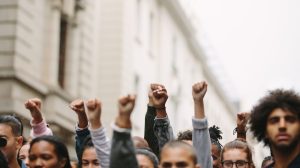As companies continue to evolve and improve strategies for creating a more diverse and inclusive workforce, Employee Resource Groups (ERGs) have emerged as an important way to further their goals. However, forming an ERG, which many companies have done, is just the first step.
An estimated 90% of Fortune 500 companies have formed ERGs. But not all are using what ERG members offer. An ERG now has the potential of not only improving employee engagement but also becoming an important part of business strategy and operations.
What’s an ERG?
Employee resource groups have roots in the Civil Rights era. Originally called workplace affinity groups, they were first formed in 1964 at Xerox. Joseph Wilson, former CEO of Xerox, and the company’s Black employees developed the idea of forming an ERG for Black employees who still faced discrimination on the job. This eventually led to the formation of the National Black Employees Caucus, the nation’s first official ERG.
Over the years, employee-led ERGs began to organize for women, older workers, new employees or people of the same ethnic origin. They also expanded to include groups organized by job (a sales or marketing ERG, for example) or shared backgrounds (such as military veterans).
Initially, they focused on social activities or specific events, such as holidays or heritage months. But they have evolved over the years to broaden their reach, delivering business results along with better employee engagement. They’ve also expanded rapidly. Every company in Fair360, formerly DiversityInc’s Top 50 Companies for Diversity has ERGs.
The Benefits of ERGs
The Boston College Center For Work lists a number of ways that ERGs impact companies.
- The use of employee knowledge and expertise for recruitment and retention of diverse employees
- Creation of culturally sensitive product development, marketing and customer service operations, as well as supplier diversity
- Building an inclusive and engaged workforce
Perhaps most importantly, an ERG fulfills one of the biggest areas in Maslow’s Hierarchy of Needs: the need to belong and feel accepted. An ERG provides a place for everyone to become part of a community. It can especially prove important for those from underrepresented backgrounds.
This is especially important in a post-pandemic era when remote employees may feel disengaged from the workplace, experiencing isolation and loneliness.
Getting the Most from ERGs
While most ERGs already do a good job of increasing employee engagement and helping underrepresented employees feel a part of the company culture, companies still may not get the most from ERGs in terms of business strategy.
Writing for LinkedIn, Nereida (Neddy) Perez, Human Resources & Global Head of Diversity & Inclusion COE at McCormick & Company, said that “the greatest potential of ERGs exists in leveraging them to drive business results.” She offered ideas for ERG executive sponsors to help realize these potential benefits.
- Share the top five priorities in company business or talent strategy with ERG leadership, asking them to make providing support in one or two areas a goal for the ERG.
- Training ERG leadership on how to quantify requested funding vs. the potential impact of the event/program.
- Coach ERGs on goal setting, metrics and scorecards, allowing current and new members of ERGs (and potential future leaders) to understand the use of these tools both for ERG projects and in their full-time work role.
- Develop ideas for leveraging specific ERGs to focus on solving an organizational issue. She offers the example of Asian workers at a utility coming up with successful ideas on how to increase the number of home energy audits in the Asian community.
ERGs can also provide support in areas beyond talent acquisition, community engagement, supporting diversity training and volunteerism (frequent areas where ERGs provide support).
Other potential areas that can benefit from ERGs include onboarding new employees, serving as a focus group, developing new business solutions, testing leadership development materials and providing input on company policy changes.
Expanding the Use of ERGs
While they started in response to racial tensions in the 1960s, ERGs today prove useful in providing representation for a wide variety of talented employees. For example, Microsoft has nine different ERGs for employees who are Asian, Black, Hispanic, disabled, women, LGBTQ+, current and former military members, members of the indigenous community, and those with families.
Other examples include the Greyglers ERG at Google for employees as they age and the 140,000 members of the global ERGs offered by Bank of America.
Setting up a new ERG requires the development of a clear purpose for the group. It also requires resources such as a budget, adequate meeting space and access to the company computer system to share information with the group. Also, companies should always make membership in any ERG voluntary.


















